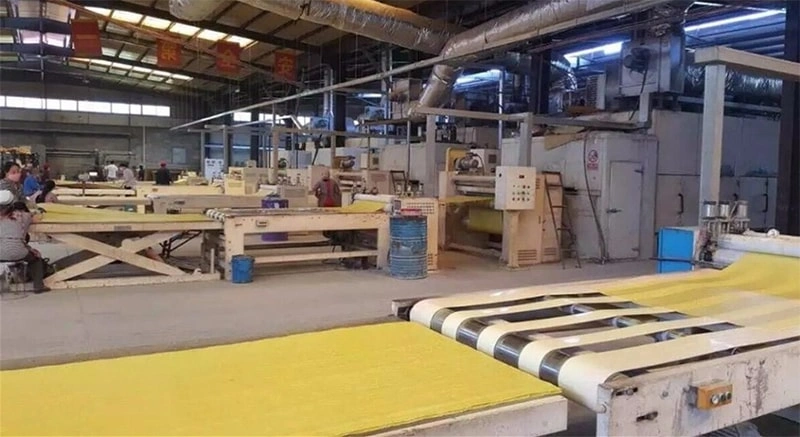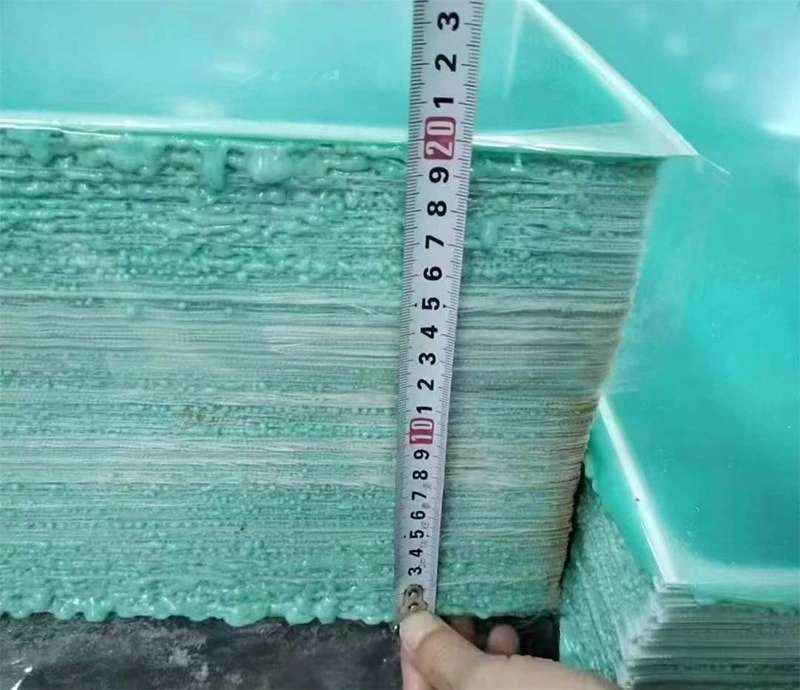As one of the most widely used insulating materials in the electronics industry, FR4 epoxy fiberglass laminate sheets are fundamental to the production of printed circuit boards (PCBs) and numerous electrical components. Their manufacturing process combines advanced materials engineering, precision processing, and rigorous quality control to deliver consistent, high-performance results. From the preparation of raw materials to final inspection and packaging, every step is carefully managed to ensure these laminates meet the demanding standards of global electronics production.

Preparation of Raw Materials
The journey of an FR4 epoxy fiberglass laminate begins with two essential components—fiberglass fabric and epoxy resin. The fiberglass fabric is produced by melting raw minerals such as silica sand and limestone at high temperatures to form ultra-fine glass filaments. These filaments are then woven into a stable, uniform fabric that serves as the reinforcement backbone of the laminate. The quality of the fiberglass weave directly affects the final product’s mechanical strength, dimensional accuracy, and dielectric performance.
Parallel to this, the epoxy resin system is formulated. This process involves blending high-purity epoxy resins with hardeners, curing agents, and flame-retardant additives to achieve a balance of mechanical strength, electrical insulation, and thermal stability. The formulation is fine-tuned according to the desired performance class of FR4, such as standard, high-Tg (glass transition temperature), or halogen-free variants. Before the materials proceed to the production stage, strict raw material testing ensures that each batch meets specifications for viscosity, resin content, and flame retardancy.

Lamination and Impregnation
Once the raw materials are prepared, the fiberglass fabric undergoes impregnation, where it is saturated with liquid epoxy resin under tightly controlled temperature and pressure. This step ensures even resin distribution and prevents air bubbles or voids that could weaken the final laminate. Precision coating equipment helps achieve consistent resin thickness and proper wet-out of the fiberglass, setting the foundation for a strong, uniform product.
The resin-coated fiberglass, often referred to as prepreg, is partially cured and then stacked into multiple layers to achieve the required laminate thickness. The alignment and layering direction are carefully arranged to enhance both mechanical stability and electrical insulation performance. These stacked layers are then placed in a hydraulic press, where controlled heat and pressure complete the curing process. During this stage, the epoxy resin crosslinks fully, bonding the layers into a solid, homogenous laminate with excellent dimensional integrity.

Curing and Post-Treatment
The curing phase transforms the material from a flexible prepreg into a rigid, heat-resistant composite. The curing cycle is precisely monitored to ensure complete polymerization without over-curing or internal stress buildup. Some manufacturers implement a post-curing process—an additional heating step designed to improve thermal endurance, reduce residual stress, and stabilize electrical characteristics. This results in FR4 epoxy fiberglass laminate sheets that exhibit superior performance across a wide temperature range and maintain their properties in high-humidity or high-voltage environments.
Finishing Operations and Testing
After curing, the laminates are trimmed, sanded, and cut to exact dimensions. The surface finishing process may include treatments to enhance adhesion for copper cladding or other secondary manufacturing operations. Each sheet is visually inspected to detect surface defects such as voids, delamination, or uneven texture.
Comprehensive quality testing follows, covering mechanical, thermal, and electrical parameters. Key tests include tensile and flexural strength, dielectric breakdown voltage, insulation resistance, and glass transition temperature (Tg). Spectroscopic and microscopic analyses may also be conducted to verify the resin distribution and fiber uniformity. These evaluations ensure that every FR4 epoxy fiberglass laminate sheet complies with international standards such as IPC-4101 and UL 94V-0 flame retardancy requirements.
Packaging and Traceability
Once the laminates pass all quality checks, they are carefully packaged to prevent moisture absorption and surface contamination during transportation. Each shipment includes detailed inspection reports and material certificates, ensuring full traceability and customer confidence. Proper packaging and labeling also help maintain the product’s stability and performance during long-term storage or export conditions.
Conclusion
The production of FR4 epoxy fiberglass laminate sheets represents a seamless combination of materials innovation and precision engineering. Each phase—from fiberglass weaving and resin formulation to impregnation, curing, and testing—plays a vital role in determining the final product’s reliability and consistency. As demand for high-performance PCBs and advanced insulation materials continues to grow, manufacturers are refining their processes to improve product quality, reduce environmental impact, and meet the evolving requirements of next-generation electronics.
With expertise in producing high-quality FR4, G10, and G11 epoxy laminates, YILONG INSULATION remains committed to supplying durable, high-performance materials that meet the highest standards of the global electronics industry. For more information or technical support, please contact us at yilong@yilonginsulation.com or visit our website www.yilonginsulation.com to learn more about our FR4 epoxy fiberglass laminate sheets and customized production solutions.